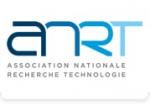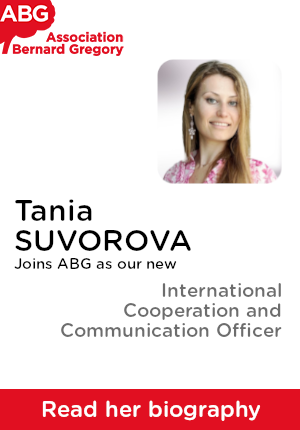Subsurface Imaging Using Drilling-Induced Noise Recorded by Geophones and DAS
| ABG-134211 | Sujet de Thèse | |
| 05/11/2025 | Autre financement public |
- Terre, univers, espace
- Numérique
- Physique
Description du sujet
The research is planed as part of the RUBADO project (BMWE, FKZ 03EE4076A), which is led by KIT, and will focus on developments within the DeepStor research infrastructure. DeepStor investigates the implementation of an HT-ATES (High Temperature Aquifer Thermal Energy Storage) system at the KIT Campus North, using former hydrocarbon reservoirs in deep sedimentary rocks. The exploration phase includes the drilling of a well to ~1.5 km. During this phase, a dense seismic network of more than 90 3C-seismic nodes will be installed in a radius of 2 km around DeepStor. In addition to the nodes, Distributed Acoustic Sensing (DAS) will also be applied along the telecommunication fiber-optic infrastructure of KIT. The objective of these networks is to record and process the noise generated by the drill-bit during drilling of the exploration well, which will be also recorded by a 3C-accelerometer from the bottom-hole-assembly, in order to obtain an image of the elastic properties of the underground around the well trajectory. This survey can be compared to a passive reverse 3D Vertical Seismic Profile (VSP), the source (the drill-bit) moving in depth and the receivers being fixed at surface. The goal of the research work is to develop and to apply a signal processing methodology of the drill-bit induced noise recorded by the surface networks to derive a reliable velocity model for P- and S-waves and, potentially, to obtain a seismic image of the geological structures. Independent data acquired at DeepStor will enable to assess the quality of the results. Particular attention is also given to the comparative assessment of DAS and geophone data in the workflow. If the approach is validated, this would show that an alternative to post-drilling active well surveys may exist.
In this framework, the following tasks are expected:
- Data acquisition and pre-processing:
- Preparation, installation and maintenance of the acquisition campaign in the field.
- Forward synthetic model of the 3C-seismic nodes and DAS geometry responses to the drill-bit sources to better understand acquisition biases and limitations.
- Collect and organize datasets.
- Quality control and pre-processing of downhole accelerometer, geophone and DAS data.
- Signal analysis of drill-bit noise:
- Characterize the spectral and temporal properties of drilling-induced signals.
- Apply cross-correlation and well-seismic processing techniques between the source(s) and the receivers.
- Velocity model inversion and seismic imaging:
- Travel-time tomography to derive initial P- and S-wave velocity models.
- Full-waveform inversion (FWI) to refine velocity models and enhance structural resolution.
- Comparative assessment of DAS and Geophones:
- Quantify differences in sensitivity, frequency content, and noise levels.
- Evaluate spatial coverage, resolution and inversion quality for each technology.
- Explore hybrid approaches that combine DAS and geophone datasets forimproved imaging.
Prise de fonction :
Nature du financement
Précisions sur le financement
Présentation établissement et labo d'accueil
The Geothermal Energy and Reservoir Technology group, led by Prof. Thomas Kohl, deals with the scientific and technological challenges of geothermal energy in research and teaching. This base load energy source can be used to produce heat and electricity. The development opportunities of geothermal energy, especially in southern Germany, offers enormous potential and must be further developed for eco-friendly economic use.
In this working group, we investigate a broad range of topics in geophysics and applied geoscience, from geothermal reservoir exploration and development, induced seismicity, thermal water circuit to numerics, related to the successful use of geothermal energy. Our research contributes to the research field "Energy " within the program "Renewable Energies " as defined by the Helmholtz Association.
The geothermal team is a multi-disciplinary team gathering geologists, geochemists, geophysicists, geomecanical engineers and several nationalities are represented (German, French, Iranian, Chinese, Spanish...). We are involved in numerous scientific projects and have many international partners.
Intitulé du doctorat
Pays d'obtention du doctorat
Etablissement délivrant le doctorat
Ecole doctorale
Profil du candidat
The ideal candidate should have the following qualifications:
- Master’s degree in Geophysics, Physics, Computational Earth Sciences, or related field.
- Strong background in seismology, seismics, inverse problems, numerical modelling.
- Experience with programming (e.g. Matlab, Python, C/C++).
- Interest in geothermal applications.
- Enthusiasm for fieldwork in addition to office work, and for interdisciplinary collaboration.
We prefer to balance the number of employees (f/m/d). Therefore we kindly
ask female applicants to apply for this job.
Recognized severely disabled persons will be preferred if they are equally
qualified.
Vous avez déjà un compte ?
Nouvel utilisateur ?
Vous souhaitez recevoir nos infolettres ?
Découvrez nos adhérents
 Laboratoire National de Métrologie et d'Essais - LNE
Laboratoire National de Métrologie et d'Essais - LNE  ADEME
ADEME  ASNR - Autorité de sûreté nucléaire et de radioprotection - Siège
ASNR - Autorité de sûreté nucléaire et de radioprotection - Siège  ANRT
ANRT  TotalEnergies
TotalEnergies  MabDesign
MabDesign  Aérocentre, Pôle d'excellence régional
Aérocentre, Pôle d'excellence régional  ONERA - The French Aerospace Lab
ONERA - The French Aerospace Lab  Nokia Bell Labs France
Nokia Bell Labs France  CESI
CESI  MabDesign
MabDesign  Ifremer
Ifremer  Tecknowmetrix
Tecknowmetrix  Institut Sup'biotech de Paris
Institut Sup'biotech de Paris  Groupe AFNOR - Association française de normalisation
Groupe AFNOR - Association française de normalisation  SUEZ
SUEZ  CASDEN
CASDEN  Généthon
Généthon  PhDOOC
PhDOOC

